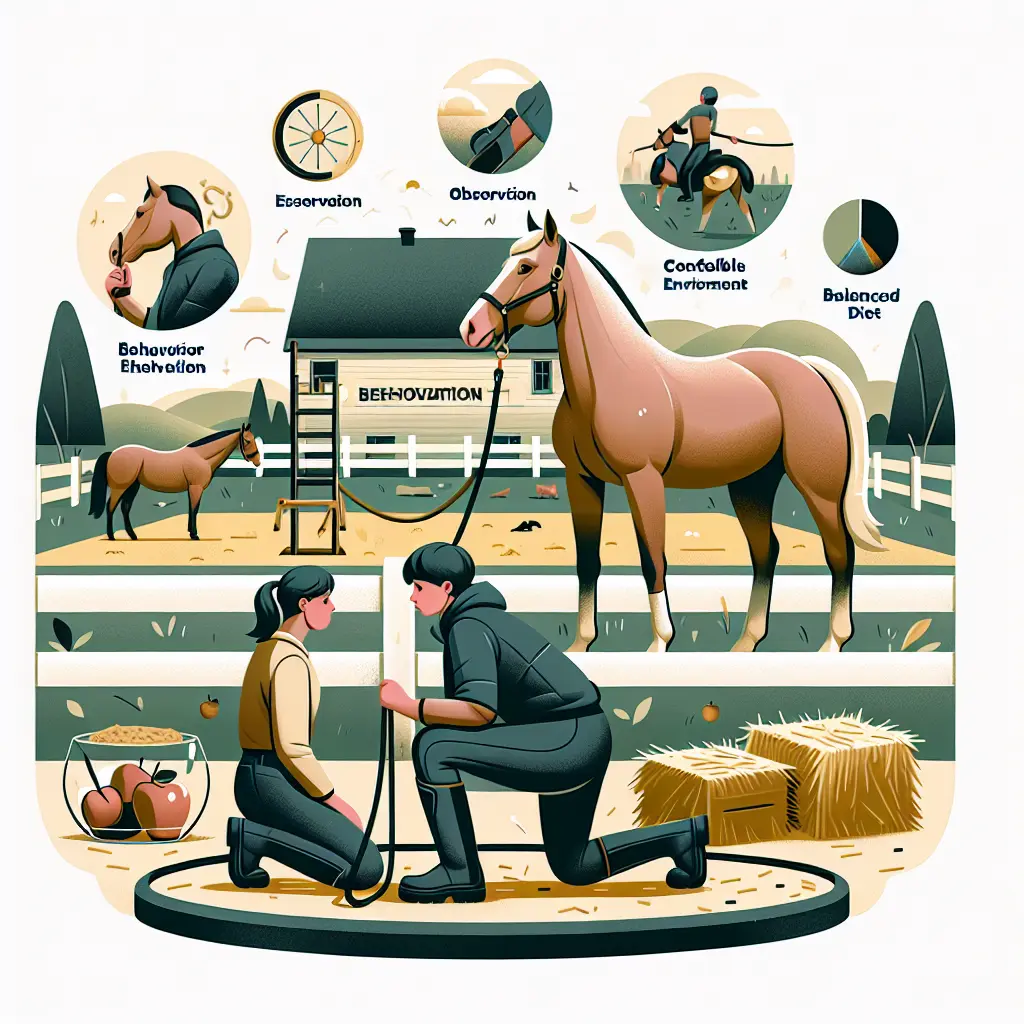Understanding and Addressing Behavioral Changes in Horses: Causes and Solutions
Recognizing and addressing behavioral changes in horses is crucial for maintaining their health, well-being, and the quality of the horse-human relationship. Behavioral changes can often indicate underlying physical or psychological issues, and understanding these signs is essential for early intervention and effective management.
Paying Attention to Horse Behavior
Regular observation of your horse's behavior is key to identifying what is normal and what may indicate a problem. By paying attention to your horse's body language and behavior patterns, you can quickly detect changes that might signal an underlying issue [3].
Normal Behavior
Each horse has its unique personality and behavior. Learning what is normal for your horse helps you identify when something is amiss.
Body Language
Changes in posture, such as frequent lying down, tail swishing, or head tossing, can indicate pain, irritation, or discomfort [3].
Behavioral Changes
Persistent changes in behavior, such as a negative attitude towards work, decline in performance, hyper-reactivity, or undesirable behaviors like kicking, biting, or teeth-grinding, should be taken seriously [1].

Potential Causes of Behavioral Changes
Behavioral changes in horses can stem from a variety of causes, including physical discomfort, environmental factors, nutritional issues, and training problems.
Physical Discomfort
Pain and soreness, such as soreness in the horse’s back or limbs, gastric ulcers, or abdominal discomfort, can lead to changes in attitude and reluctance to work. For instance, ill-fitting tack can cause significant discomfort and lead to problem behaviors [1].
Environmental Factors
Living conditions such as poor stable conditions, lack of social interaction, or inadequate exercise can lead to stress, anxiety, and subsequent health problems. Horses need regular exercise, socialization, and a clean, comfortable living space for their mental and physical health [3].
Nutritional Issues
A balanced diet is crucial for maintaining both physical and mental health in horses. Nutritional deficiencies or imbalances can lead to lethargy, irritability, or more severe behavioral changes. Regular assessments of dietary needs, considering factors like age, activity level, and health status, are necessary [3].
Training Issues
Consistent training: Inconsistent training methods or cues can lead to conflict behaviors. Working with a qualified trainer who uses positive reinforcement techniques can help address training challenges and improve the horse-human relationship [2].

Solutions and Behavior Modification Techniques
Addressing behavioral changes in horses often requires a combination of identifying the underlying cause and implementing appropriate behavior modification techniques.
Positive Reinforcement
Shaping: This technique involves rewarding the horse for gradual approximations of the desired behavior. For example, when teaching a horse to load on a trailer, the horse is initially praised and rewarded for taking steps toward the trailer, then for walking calmly up to the ramp, and finally for entering the trailer [2].
Desensitization
This method involves exposing the horse to a problem situation at a minimized level to teach it to tolerate the situation without fear. For instance, a horse fearful of having its hooves picked can be desensitized by starting with rubbing and massaging the upper leg and gradually working down to the hoof [2].
Counterconditioning
This method reduces undesirable behavior by teaching the horse to replace it with a more favorable behavior. For example, a horse that is fearful of having its hooves picked can learn to stand calmly and relax in exchange for a treat. Once the horse is calm, desensitization can be added by handling the leg closer to the hoof [2].

Practical Training and Handling
Techniques based on understanding, patience, and positive reinforcement foster trust and cooperation, leading to a healthier and more harmonious relationship between horses and their handlers. Avoid using punishment as it may only suppress the unwanted behavior rather than eliminate it completely [2].
Implementing Changes
When addressing behavioral changes, it is important to be systematic and patient.
Identify the Cause
Determine whether the behavioral change is due to physical discomfort, environmental factors, nutritional issues, or training problems.
Consult Professionals
Work with veterinarians, equine specialists, and qualified trainers to develop a comprehensive plan.
Use Humane Techniques
Employ behavior modification techniques such as positive reinforcement, desensitization, and counterconditioning to address the issue.
Monitor Progress
Regularly observe and adjust your approach as needed to ensure the best outcomes for your horse.

Conclusion
Understanding and addressing behavioral changes in horses is a multifaceted process that requires careful observation, identification of underlying causes, and the use of humane behavior modification techniques. By providing a comfortable living environment, a balanced diet, and using positive reinforcement training methods, you can help maintain your horse’s health and well-being, and strengthen the bond between you and your horse.
Explore more equestrian needs such as our Jodhpur Collection for comfortable riding attire, or browse our Horse Riding Gloves Collection for added grip and protection during your training sessions.


